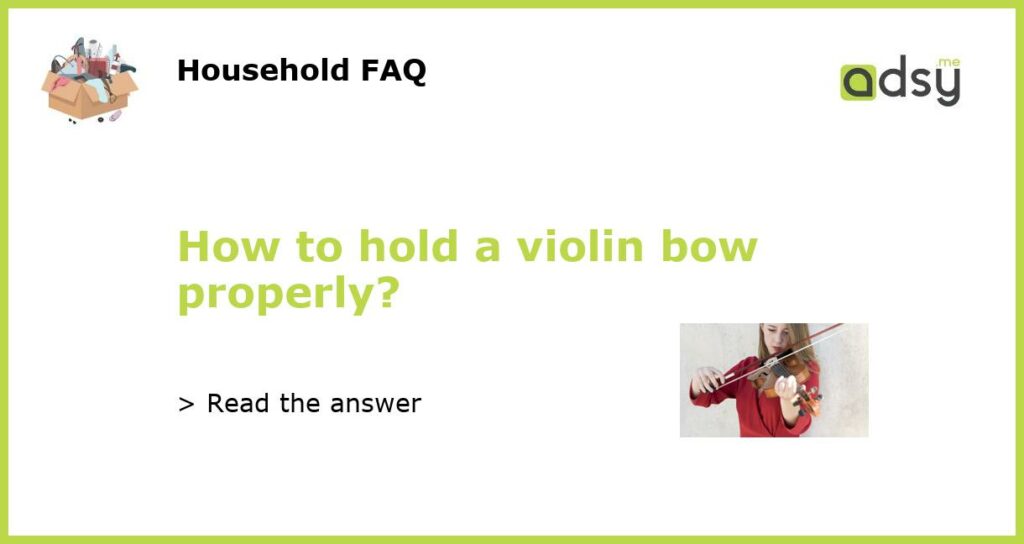Understanding the Importance of Holding a Violin Bow Properly
Playing the violin can be quite challenging, especially for beginners who may struggle with various aspects of the instrument. One of the most critical components of playing the violin is holding the bow correctly. Without proper grip and handling, it is impossible to produce the right sounds and tones. This article provides a detailed guide that explains how to hold a violin bow properly.
The Basic Elements of Holding a Violin Bow Properly
Before you start practicing any violin technique, it is essential to understand the basics of holding the bow correctly. You need to place your thumb between the silver and leather bits at the bottom of the frog. Your first finger should rest on top of the bow between the hair and stick. The other three fingers should rest on the bowstick at the frog. Make sure your fingers are relaxed and flexible, and your knuckles should form a slight curve to keep the fingers in the right position.
The Correct Bowing Techniques for the Best Results
The way you bow the strings can make a significant impact on the sound you produce. The bow should be drawn perpendicular to the strings with even pressure applied. Use your elbow and forearm to move the bow and make sure your wrist remains relaxed. The bow should be angled slightly towards the scroll, and the contact point with the strings should be centered between the bridge and fingerboard.
Tips to Help You Hold a Violin Bow Correctly
Learning to hold a violin bow correctly can be challenging, but with persistence and practice, anyone can master it. Here are some useful tips to help you get started:
- Practice holding the bow without the violin to get the feel of the grip and finger placement.
- Don’t grip the bow too tightly; this can affect the sound and cause tension in your fingers and hand.
- Keep your elbow and shoulder relaxed while you bow to avoid any unnecessary strain on your arm and shoulder.
- Use a mirror to watch yourself while you practice and adjust your grip and bowing techniques as needed.
- Experiment with different types of rosin and bow hair tension to achieve your desired sound.
Holding a violin bow correctly is essential to produce the right sounds and tones when playing the instrument. It takes dedicated practice and patience to learn the proper grip and bowing techniques, but with persistence and determination, anyone can master this critical aspect of playing the violin. Experiment with different techniques and don’t be afraid to seek guidance from a qualified violin teacher to perfect your form and technique.





